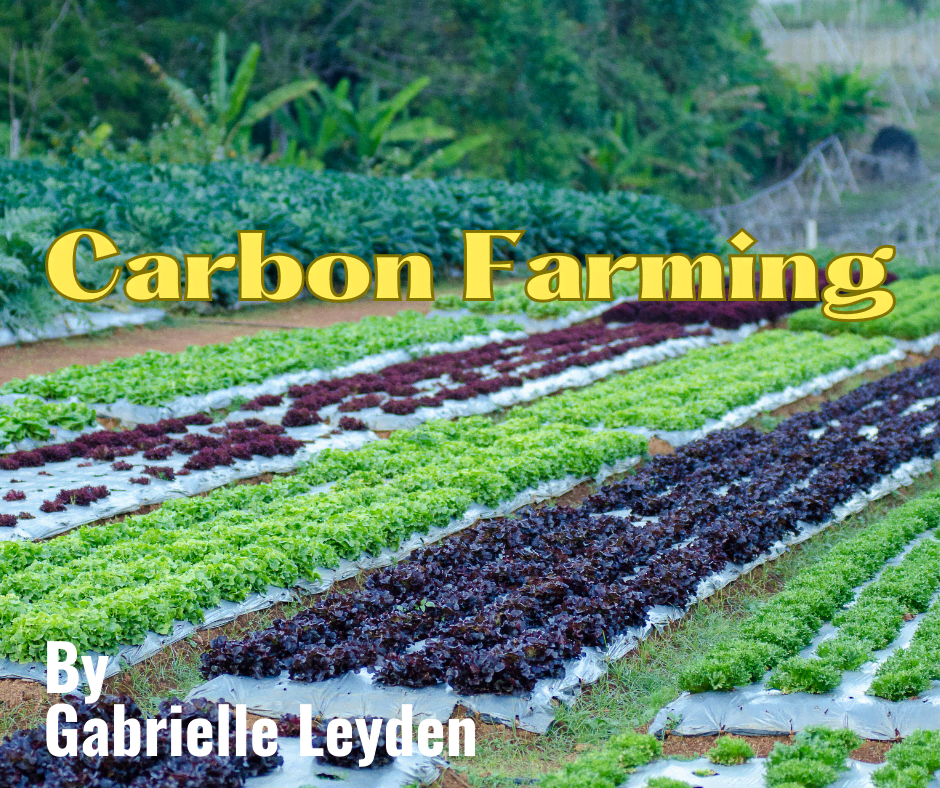
Rising global temperatures are affecting our lives and our livelihoods, with agriculture at the top of the list. As temperatures rise and growing seasons lengthen in our more northern reaches, farmers are contemplating different crops and cropping practices; shifting from corn to sorghum, sowing two crops per season. Droughts and falling aquifer levels plead in favor of more drought-tolerant crops and less reliance on irrigation, while floods demand physical barriers and changes in the way the land is worked and crops planted. Hedges, contour-farming, multi-cropping, and minimal tillage all play a role in keeping the land fertile and in place. Insect populations, and those of their predators, will also change. Drops and shifts in various populations are already being recorded. However, what lies in store for farmers regarding crop pests and diseases remains undetermined.
Rising temperatures are schanging the lay of the land and what is planted on it; shifts in sowing periods, germination, and increased yields are not the only residual effects. The combination of high temperatures and drought can also wreak havoc on yields. Even more concerning, according Penn State researchers in 2020, the Corn Belt may shift north from Illinois and Iowa to Minnesota and the Dakotas. Conditions farther north are becoming more suitable for corn (more humidity), sorghum (higher temperature tolerance) and soybeans (a combination of both). Change has begun, but the pace should give farmers time to adapt.
Livestock will also have to cope with heat stress, droughts, flooding, and lower-quality food supplies, and fisheries must adapt to changing water temperatures, shifts in the ranges or population dynamics of invasive species, and changes in the ranges or lifecycle timing of certain species. Less oxygenated water as ocean temperatures rise (98.1°F recorded in July off the southern tip of Florida!) and the bleaching of coral are already well-known phenomena. That is, however, another kettle of fish!
Back to terra firma
According to the EPA’s official figures, agriculture is responsible for about one-tenth of U.S. greenhouse gas emissions, mostly methane from the digestive systems of livestock and nitrous oxide from synthetic fertilizers. Last year’s Inflation Reduction Act included $19.5 billion of aid for farmers under four of the USDA’s conservation programs: the Agricultural Conservation Easement Program that pays farmers not to see their land to developers; Regional Conservation Partnership Program, which unites farmers and local authorities in programs covering regional areas; Conservation Stewardship Program, under which USDA experts provide farmers with individualized guidance; and Environmental Quality Incentives Program, which promotes agroecological practices) to be spent exclusively on efforts to “reduce, capture, avoid or sequester carbon dioxide, methane or nitrous oxide emissions.” Carbon farming could be part of the solution.
Carbon Farming
What, you may ask, is carbon farming? According to the Carbon Cycle Institute, it is “a whole farm approach to optimizing carbon capture on working landscapes by implementing practices that are known to improve the rate at which CO2 is removed from the atmosphere and stored in plant material and/or organic matter.” The idea is to implement conservation practices that improve soil health and sequester carbon while producing benefits such as enhanced soil water holding capacity, biodiversity, and resilience.
The ten best carbon farming practices for soil health and income can be divided into two main groups, ‘reductions’ and ‘enhancements’. The first category focuses on the reduction of fertilizer applications and tillage. Manufacturing inorganic fertilizers releases great amounts of greenhouse gases into the atmosphere and their manufacturing is costly. Furthermore, frequent, heavy tillage increases the release of CO2 from the soil and breaks up soil structure, which can lead to erosion and a drop in productivity. Minimum and no-tillage schemes avoid these problems and enhance crop yields.
More pro-active approaches involve leaving crop residues in the field, thereby enhancing soil moisture and fertility. This practice provides living microorganisms a chance to interact with organic material for a healthier soil. Similarly, sowing nitrogen-fixing cover crops, instead of leaving fallows bare, helps keep carbon in the ground by reducing surface exposure to the elements. This has the added benefits of improving soil nitrogen content for the next crop. Sowing companion crops not only increases plant diversity and diversifies a farmer’s sources of revenue, but can also protecting crops from pests, or simply stimulate growth.
Agroforestry is also a key element in carbon farming, as it improves air and water quality, sequesters carbon for years, provides habitat for wildlife, shade for livestock, reduces carbon emissions, and diversifies income. Trees also slow runoff and hold down the soil!
Finally, carbon farming embraces common-sense management practices less directly related to the crops themselves. Monitoring tasks and maintaining data on farm operations maximizes resource use while minimizing duplication of effort. Improved water management always pays off, while conserving this increasingly precious resources, as does fuel efficiency. Regular maintenance, proper storage, and planning increase productivity while keeping emissions in check.


